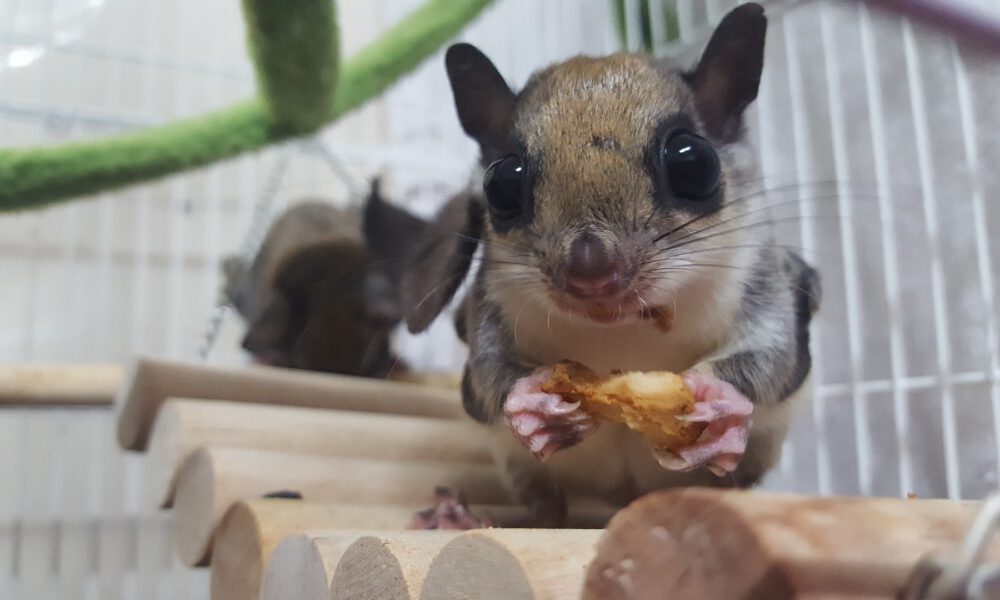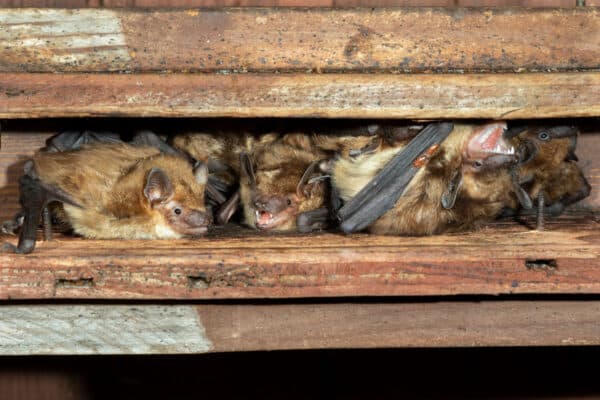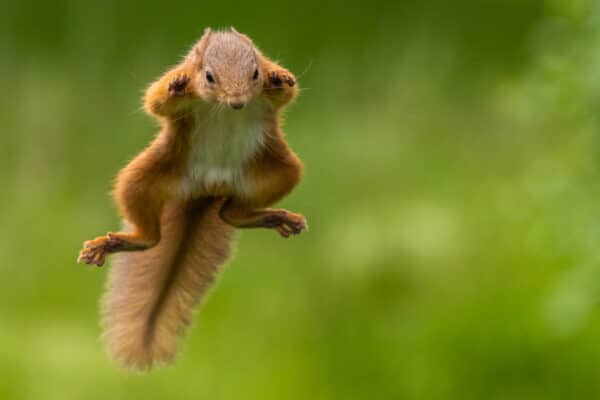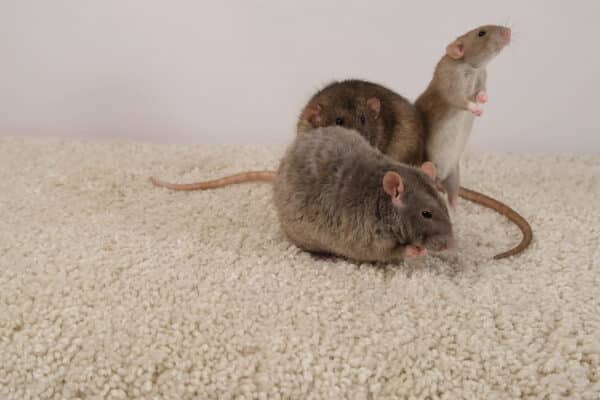
What are Flying Squirrels?
What are flying squirrels, you ask? Well, they are precisely what the name says they are, but not.
This variety of squirrel grows from 3 inches to approximately 2 feet long. It weighs 3.5 to 5.5 pounds and can live up to 5 years. But that is not what you wanted to know, is it?
Flying squirrels are known to soar at great lengths from tree to tree. One single flight can span 150 to 500 feet. However, these highfliers do not actually fly; instead, they glide. You see, the flying squirrel has what is called a patagium that extends in the shape of a square, acting like its wings or a parachute, more accurately.
The Patagium is a flap of fur-covered skin stretching from tiny wrist to ankle. When stretched, it forms that square so the squirrel can glide up high and away from predators. The squirrel can control directions and get to the next safe landing spot by dipping its hand or foot. Pretty impressive, right?
Flying Squirrel Facts
The flying squirrel looks much like a ground or tree squirrel. They have the same small round face, large eyes, big ears, and long fluffy tails. Some people even keep flying squirrels as pets.
These furry critters are both omnivorous and nocturnal. With their highly developed sense of smell, they come out at night to forage for food. This critter will eat things like seeds, nuts, tree sap, fruit, flowers, fungi, insects, and sometimes eggs.
Are Flying Squirrels Pests?
Are they? Well, it depends on whom you ask. The answer may be a definite no for someone who has fostered a baby flying squirrel into a pet. If they stay outside and in their natural habitat, then again, no. But if you get a flying squirrel family living in your attic or ceiling, the answer will quickly change to a resounding yes!
Nesting
Twice a year, flying squirrels will nest down to have their litter of pups. There they will have two to seven per litter per season. Naturally, they would build a nest comfortably in a tree. But if they set their sites on your home, you have trouble.
In Your Home
When the temperature begins to drop, or they are ready to nest, the flying squirrel will look for a suitable place to build the nest. They like to use insulation as bedding to keep them warm in the cold months.
You will know they are there soon after they move in as their noise gives them away. They are the only breed of the nocturnal squirrel, and they are incredibly playful little critters. Perhaps that is why some like them as pets. But an invasion or infestation is another thing.

Damage to Your Home
If a flying squirrel has nested in your home, there can be extensive damage done. They will tear up the insulation and anything soft to make a comfy, cozy nest. They may even chew on wires and cause a short or even a fire.
Worst of all would be the smell of urine and the droppings everywhere. No one wants that from a colony of twenty flying squirrels.
Signs of a Flying Squirrel Infestation
If you walk around the home and see chew marks on the roofline and small entry points, you may have a rodent or flying squirrel problem. Furthermore, you will find evidence of the critters through their tracks, droppings, and scent.
What will you hear? Late at night, you will listen to scratching and scurrying sounds. You may even hear their chatter, which sounds like chirping or clucking. They are very social creatures and will live in a colony of about 20 squirrels. So, if you see one, you most likely have a colony.
Health Threats
Besides the apparent foul ammonia odor and filth in your attic, there are little known health risks to flying squirrels. They are not known to carry rabies. The one disease they can carry does not pass to humans. That said, they do carry lice, fleas, mites, and parasites.
Preventing Flying Squirrels in your Home
One thing you should know, certain flying squirrels are protected in specific areas. Therefore, you’d better not chance harming one. But you can prevent them from entering your home and making a mess.
Try the following things and then call a Wildlife Control company to help with the rest.
- Cover any small holes and chew places with metal. If they return to try again, the metal will stop them.
- Use a wire mesh over all vent openings so they cannot climb in there.
- Seal any cracks or gaps leading to the attic or inside the home.
Then, call your local Wildlife Removal Company.
You can trust the professionals at Covenant Wildlife Removal to get rid of the flying squirrels for good. They can do the patch and prevention work for you. Then they can trap and remove the animals safely and humanely, locating them to an approved location.
The friendly staff at Covenant will also clean up the mess, disinfect and spray odor remover to get your home back to feeling clean again.
So, what are you waiting for? If you have a flying squirrel or any other wildlife issue in your home or yard, trust the experts at Covenant Wildlife Removal today.




